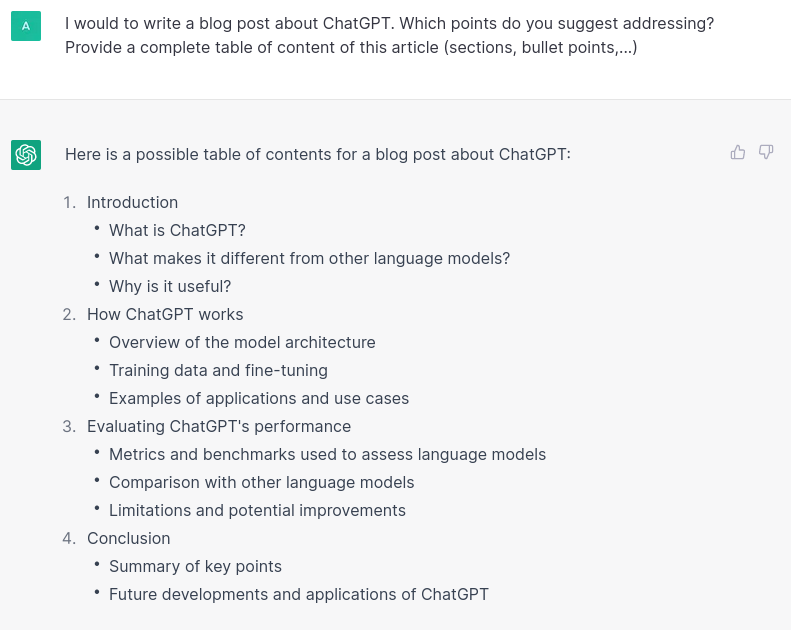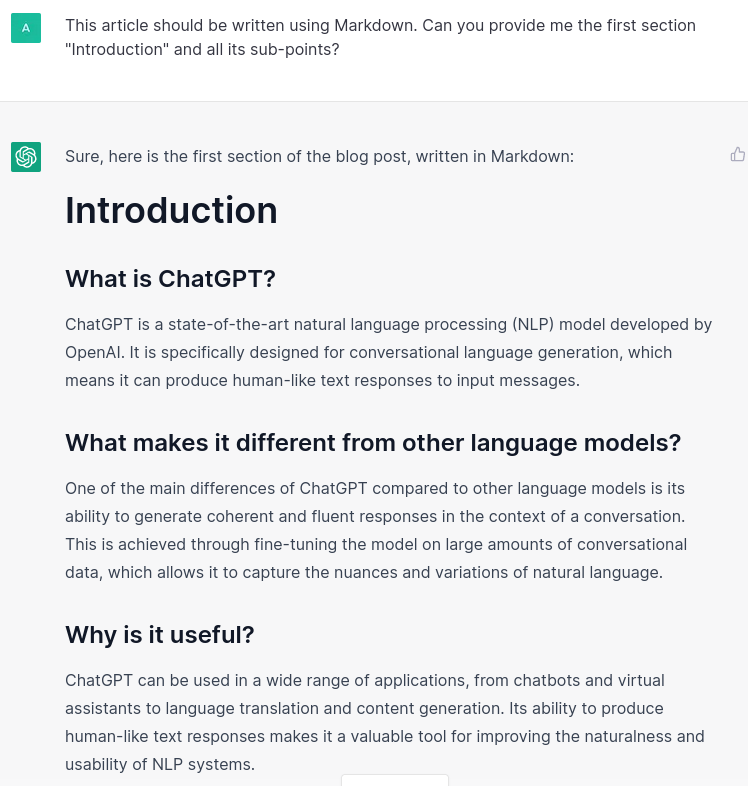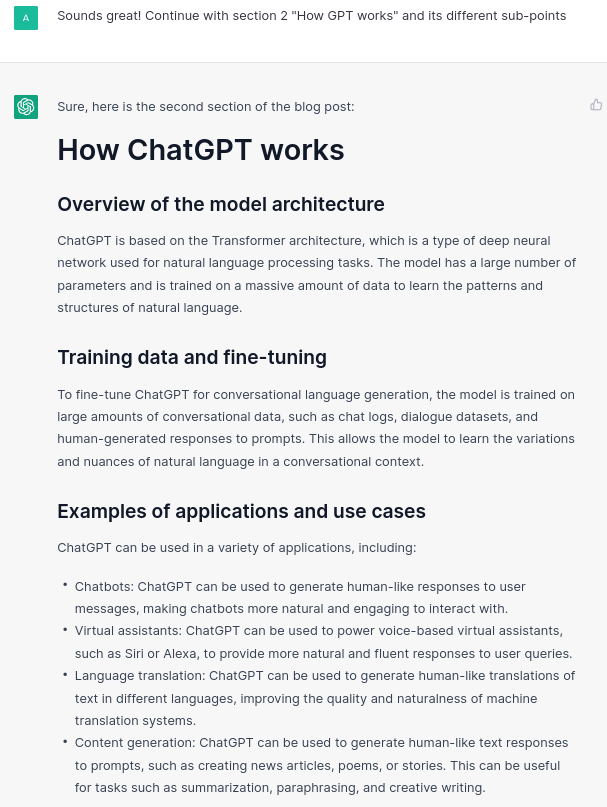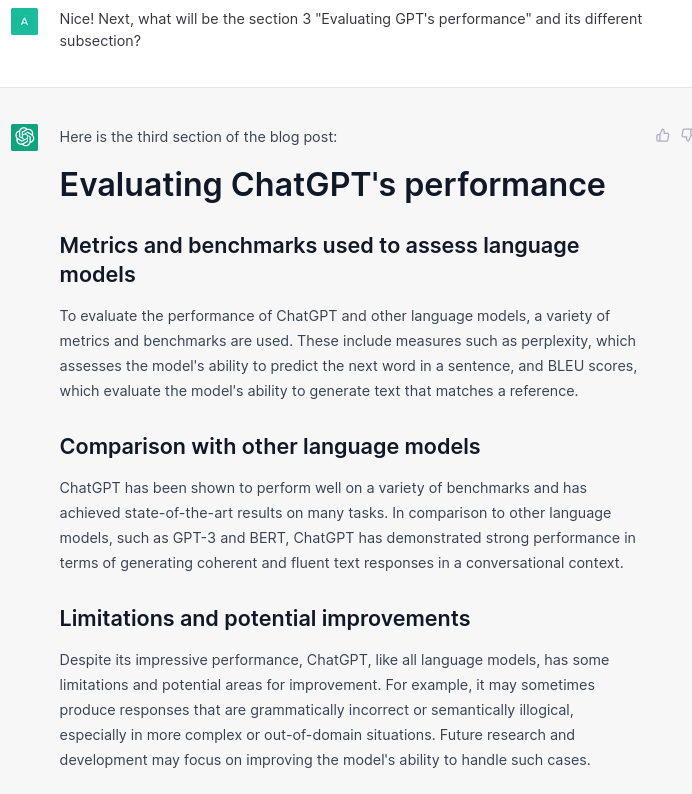How good is ChatGPT, the new conversational model of OpenAI?
Dec 1, 2022 by Alexandre Croix | 3365 views
https://cylab.be/blog/247/how-good-is-chatgpt-the-new-conversational-model-of-openai
Introduction
What is ChatGPT?
ChatGPT is a state-of-the-art natural language processing (NLP) model developed by OpenAI. It is specifically designed for conversational language generation, which means it can produce human-like text responses to input messages.
What makes it different from other language models?
One of the main differences of ChatGPT compared to other language models is its ability to generate coherent and fluent responses in the context of a conversation. This is achieved through fine-tuning the model on large amounts of conversational data, which allows it to capture the nuances and variations of natural language.
Why is it useful?
ChatGPT can be used in a wide range of applications, from chatbots and virtual assistants to language translation and content generation. Its ability to produce human-like text responses makes it a valuable tool for improving the naturalness and usability of NLP systems.
How ChatGPT works
Overview of the model architecture
ChatGPT is based on the Transformer architecture, which is a type of deep neural network used for natural language processing tasks. The model has a large number of parameters and is trained on a massive amount of data to learn the patterns and structures of natural language.
Training data and fine-tuning
To fine-tune ChatGPT for conversational language generation, the model is trained on large amounts of conversational data, such as chat logs, dialogue datasets, and human-generated responses to prompts. This allows the model to learn the variations and nuances of natural language in a conversational context.
Examples of applications and use cases
ChatGPT can be used in a variety of applications, including:
- Chatbots: ChatGPT can be used to generate human-like responses to user messages, making chatbots more natural and engaging to interact with.
- Virtual assistants: ChatGPT can be used to power voice-based virtual assistants, such as Siri or Alexa, to provide more natural and fluent responses to user queries.
- Language translation: ChatGPT can be used to generate human-like translations of text in different languages, improving the quality and naturalness of machine translation systems.
- Content generation: ChatGPT can be used to generate human-like text responses to prompts, such as creating news articles, poems, or stories. This can be useful for tasks such as summarization, paraphrasing, and creative writing.
Evaluating ChatGPT’s performance
Metrics and benchmarks used to assess language models
To evaluate the performance of ChatGPT and other language models, a variety of metrics and benchmarks are used. These include measures such as perplexity, which assesses the model’s ability to predict the next word in a sentence, and BLEU scores, which evaluate the model’s ability to generate text that matches a reference.
Comparison with other language models
ChatGPT has been shown to perform well on a variety of benchmarks and has achieved state-of-the-art results on many tasks. In comparison to other language models, such as GPT-3 and BERT, ChatGPT has demonstrated strong performance in terms of generating coherent and fluent text responses in a conversational context.
Limitations and potential improvements
Despite its impressive performance, ChatGPT, like all language models, has some limitations and potential areas for improvement. For example, it may sometimes produce responses that are grammatically incorrect or semantically illogical, especially in more complex or out-of-domain situations. Future research and development may focus on improving the model’s ability to handle such cases.
Conclusion
Summary of key points
- ChatGPT is a state-of-the-art natural language processing model developed by OpenAI.
- It is designed for conversational language generation, which means it can produce human-like text responses to input messages.
- ChatGPT has been shown to perform well on a variety of benchmarks and has achieved state-of-the-art results on many tasks.
Future developments and applications of ChatGPT
As a powerful and flexible tool for natural language processing, ChatGPT has many potential applications and areas for future development. Some possible directions for future research include:
- Improving the model’s ability to handle complex and out-of-domain situations
- Developing new applications for ChatGPT, such as chatbots, virtual assistants, and language translation systems
- Exploring the use of ChatGPT in creative tasks, such as generating text for stories, poems, and articles.
Overall, ChatGPT is an exciting and promising development in the field of natural language processing, and it has the potential to open up new possibilities for human-computer interaction and communication.
Notes
Until this section, all the article was written by ChatGPT. Next, the different screenshots of what we asked to produce this result! What do you think?
Don’t hesitate to try it yourself: https://chat.openai.com
This blog post is licensed under
CC BY-SA 4.0







